Many thanks to Carolyn Charles, retired Park High teacher and official historian of St. Louis Park Schools, for much of the following information.
CONSTRUCTION OF LINCOLN SCHOOL
St. Louis Park’s Independent School District was organized in March 1888 with two elementary schools. One of its first tasks was to build a high school. The first lots proposed for the school were rejected as being too close to the railroad tracks. On June 26, 1889, the school board accepted 3-6 lots donated by the St. Louis Park Land and Development Company (T.B. Walker’s Syndicate). The location was at the southeast corner of present-day 37th Street and Alabama Ave. The front faced north – the address was 5925 W. 37th Street.
The school was built in 1889 at a cost of $8,500. The School Board and the Village Council split the cost of the building, with the Village Council to hold its meetings on the second floor. Bonds to build a town hall were issued on December 20, 1889.
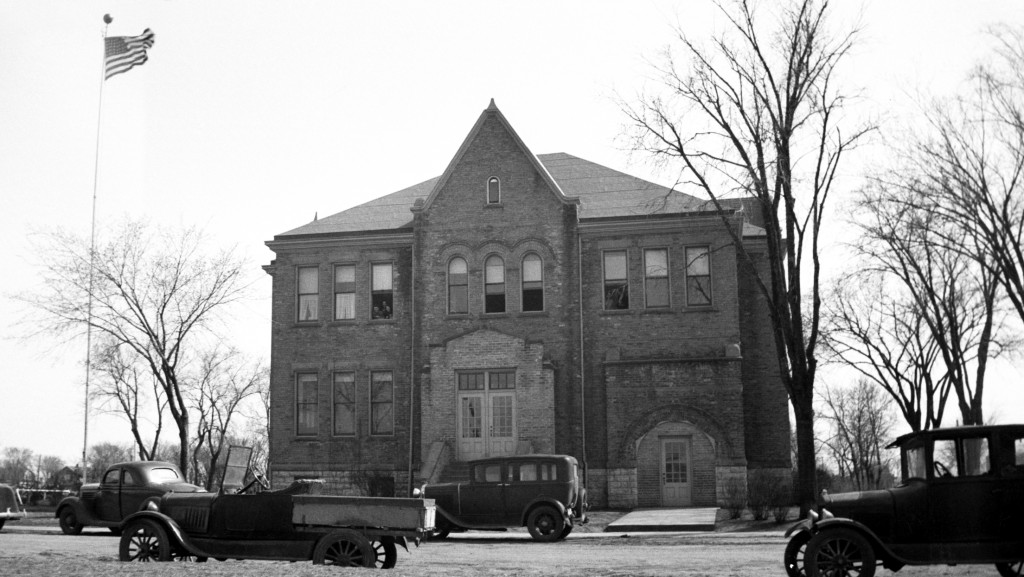
1890
The school opened January 6, 1890, with James T. Davis as Principal, Superintendent, and teacher. Mary C. Bates was the other teacher. (Mary’s sisters Bertha and Irene Bates were also teachers at the school at various times.) It was named Lincoln School on July 12, 1890. The original school was only half the size it came to be. A fire destroyed part of the building in the early 1890s and when the repairs were made it was voted to enlarge it. The top floor was used as a Village Assembly room and the first floor for the school.
1893-1894
On August 6, 1894, the School Board asked the Village Council for a lease of the Village hall to the School Board to be used for educational purposes only. The Council agreed to lease the Hall to the School District for one year at $12.50 per month. The council room would be retained by the Council. 1894 was the year that St. Louis Park first had a high school.
1899-1900
In 1900 the first seniors (six girls and a boy) graduated. Early graduation ceremonies were held in the Hamilton Building 2nd floor, used as the Odd Fellows and Masons’ Hall.
1902-1903
A commencement program for the eighth grade, Lincoln School, was held on June 3, 1903. There were 19 graduates. At the end of a program packed with songs and recitations, Superintendent of Schools Herbert Carleton presented the diplomas. The next year he went into the real estate business.
In the early 1900s, the city issued $12,000 in bonds to build the south end of the building. In 1902, the school was transferred from the School District to the Village.
1905-1906
Indoor plumbing was installed in 1905.
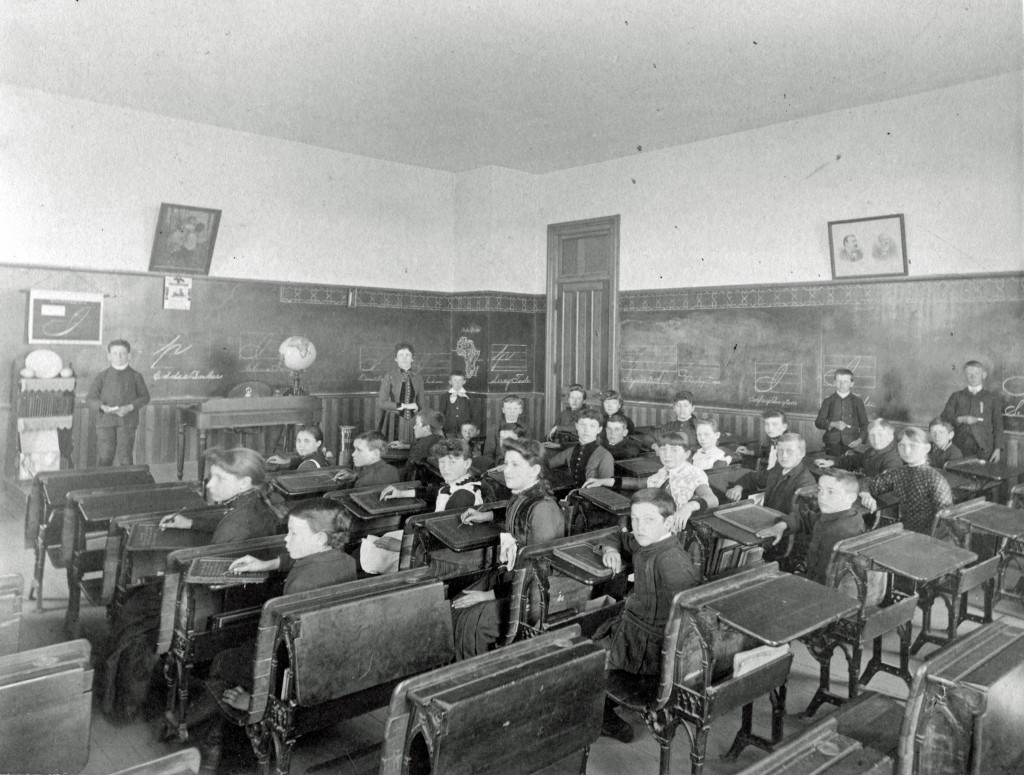
1914-1915
In 1914 the new junior/senior high school was built, and Lincoln became a grade school, although in 1930 it housed 7th graders. The next year, the 7th graders were moved to the Brick Block for lack of space.
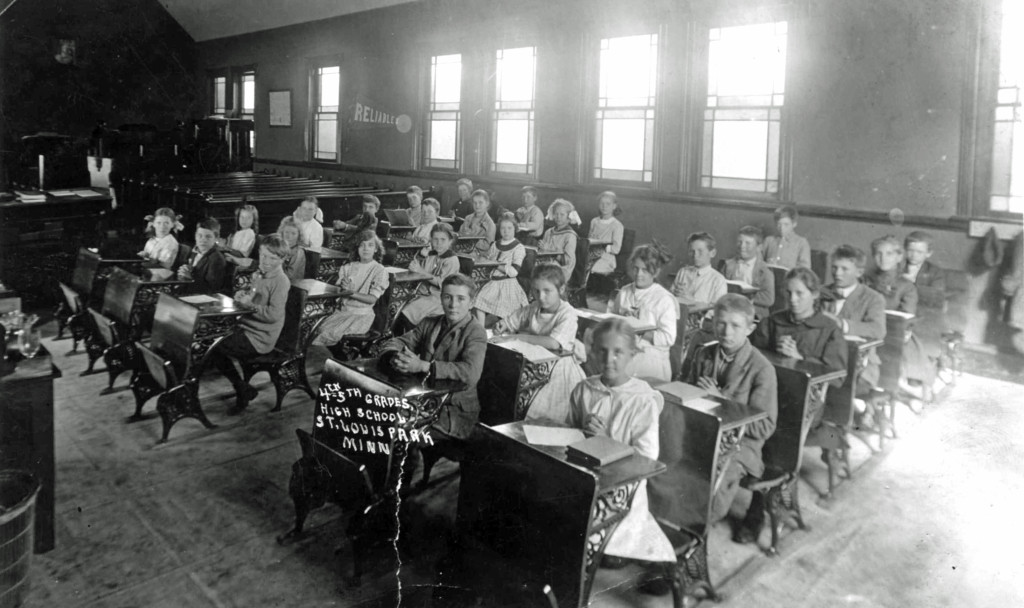
1916-1917
The Lincoln Mothers’ Club was organized in 1916. Mrs. W.H.D. Reese was its first President. The mothers provided hot lunches for the students and later raised funds for a cook by serving at a banquet for the Commercial Club.
The group’s constitution was drawn up in February 1917. It successfully lobbied the School Board for a new oil stove and “sanitary towels for the children.”
1918-1919
Mrs. Wolford was Mothers’ Club President in 1918. A history of the group tells us “Attention was called to the Dry Amendment and members were asked to use their influence to make Minnesota dry.” Donations were collected for victims of the devastating fire in Northern Minnesota. “Club helped arrange a home coming for the war boys.”
School colors in 1919 were green and white.
1925-1926
Teachers included:
- Bertha Bates
- Ethel Baston
- Miss Kelly
- Miss Schlater
On October 6, 1925, the Mothers Club met at the school and were entertained by the students. The Club voted to provide hot lunches to the pupils as in previous years.
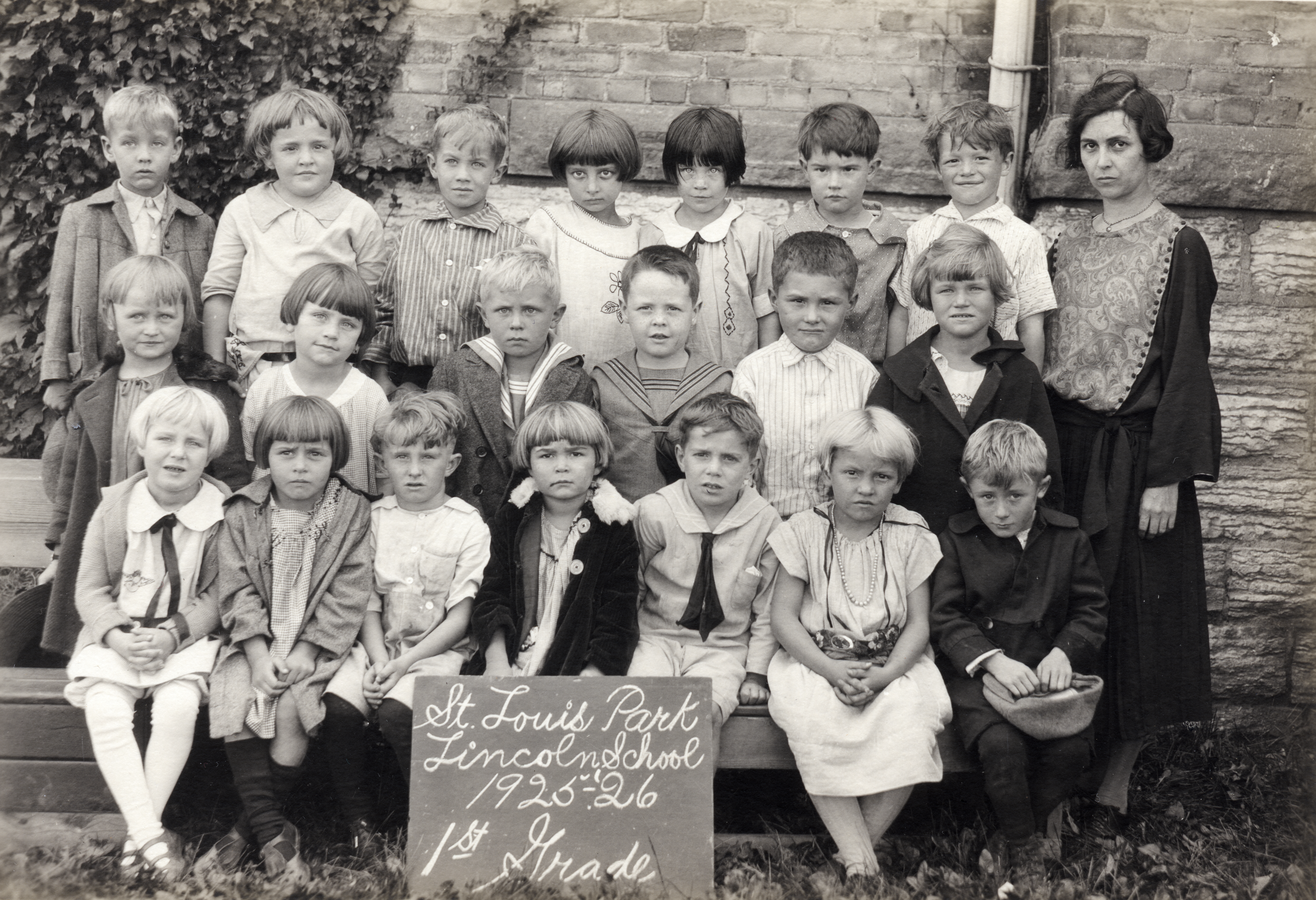
Typical activities in the ’20s were fundraising carnivals, food drives for school lunches, and giving Christmas parties and spring picnics for the children.
1926-1927
In 1927 the club “voted to give share for glass eye for child at Oak Hill.”
1927-1928
In 1928 the Mothers Club staged the play “The Pranks at the Little Red School House.” This fundraiser proved such a success that they staged it again at Miles Standish School in Minneapolis.
1931-1932
1931 may have been the year that the Mothers’ Club became the PTA, as the president was a Mr. Whitfield. The activities of the group reflected the Depression, as collections were made for the needy.
In 1932 members of the PTA signed a petition to be sent to Senators in Washington, DC regarding censorship of movies.
1934-1935
Arthur Crosby was a janitor at the school in 1934.
1938-1939
In 1938 the building was sold for $1 to the village and was used as the Village/City Hall until 1963. Other tenants along the way were the Hennepin County Historical Society (1938-1946), WPA (1939-40), Camp Lincoln Boys’ Camp (1946-49), Rural Hennepin County Nursing Committee (1951-55), a drivers’ license bureau, the Chamber of Commerce, and temporary Sunday School space for neighbor Union Congregational Church.
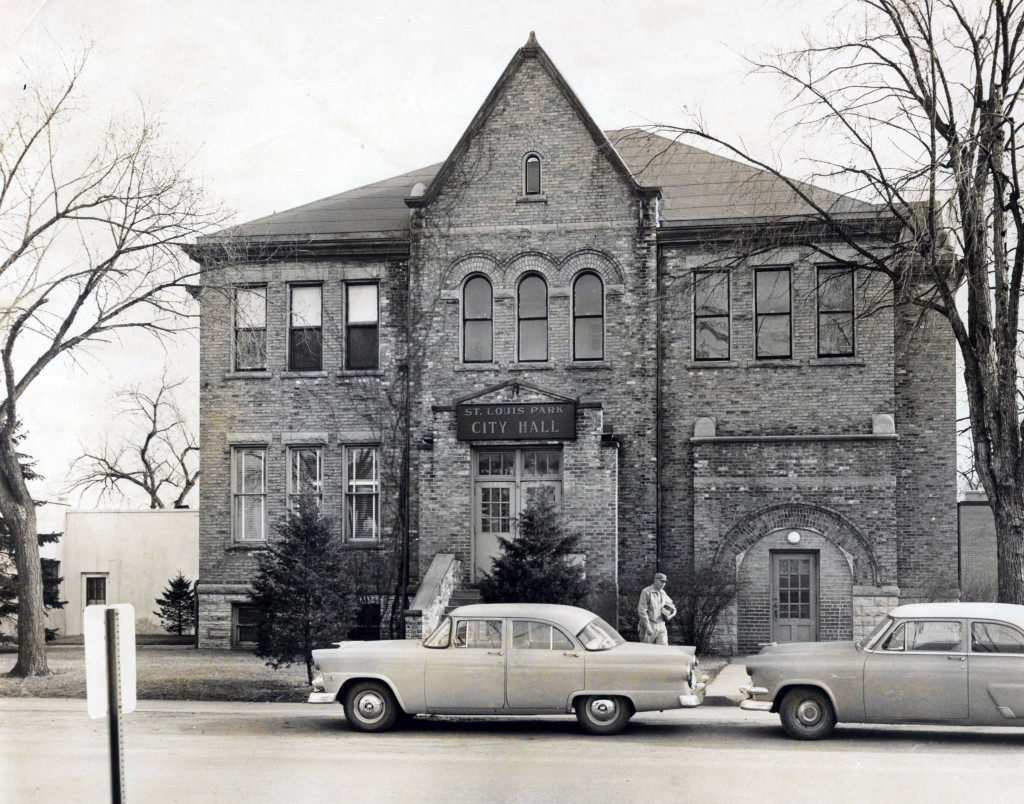
1946-1947
Try as they might, the school district could not stay out of the building as the student population exploded after World War II. In 1946-1947, Lincoln School was used as overflow elementary school space for 120 students, grades 1-3.
1947-1948
In 1947-1948 the building was used for grades 4 and 6.
1949-1950
In 1949-1950 the building was used for grades 4 and 6.
DEMOLITION OF LINCOLN SCHOOL/VILLAGE HALL
In 1966 the building was sold to Minnesota Rubber for $130,000. It was demolished shortly afterwards – a “giant clam” took one week to level the venerable building.
The bell that had served Lincoln School was moved first to the Central building when it was the High School and then to the present-day High School, where it is displayed today. The St. Louis Park Historical Society has a well-worn painting of Abraham Lincoln from the school. Others have other souvenirs, including, presumably, a bust of Lincoln that was once on the landing on the way to the second floor.
